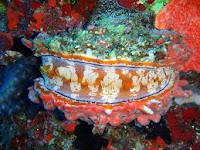A scuba diving regulator is the piece of equipment that enables a diver to breathe from a scuba tank.The compressed air inside a scuba tank is at an extremely high pressure, which could injure a diver who tries to breathe directly from the tank. A regulator reduces the pressure of the compressed air a diver breathes.
In its most basic form, a scuba regulator consists of two parts, a mechanism that accomplishes the first stage of pressure reduction from the pressure in the tank to an intermediate pressure (called a first stage) and a mechanism that accomplishes the second stage of pressure reduction from the intermediate level to a pressure the diver can breath(called a second stage).
All modern scuba diving regulators have the following features
Optional Features of a regulator:
The Scuba Regulator is a vast subject that we can talk and talk for several pages, we did tackle in this post a basic information regarding scuba diving recreational Regulators.
In its most basic form, a scuba regulator consists of two parts, a mechanism that accomplishes the first stage of pressure reduction from the pressure in the tank to an intermediate pressure (called a first stage) and a mechanism that accomplishes the second stage of pressure reduction from the intermediate level to a pressure the diver can breath(called a second stage).
All modern scuba diving regulators have the following features
- First stage – Attaches to the scuba tank valve. The first stage reduces cylinder air pressure to an intermediate pressure and routes it to several hoses.
- Second stage – At the end of a hose is the mouthpiece you breathe through. The second stage reduces the intermediate pressure air to the exact pressure you need for breathing comfortably.
- Alternate second stage – This is just like the one you breathe from, but provides an easy way to share air in case you need to help your buddy. Sometimes the alternate second stage is built into the inflator on your BCD
- Low pressure hose(s) – These hoses supply air to your BCD (and dry suit if you’re using one) so you can inflate it to increase your buoyancy.
- SPG (Submersible Pressure Gauge) hose – Sends air to your SPG so you always know how much air you have left in your tank.
Optional Features of a regulator:
- Adjustable second stage – Breathing characteristics change during a regulator’s maintenance cycle. This allows you to fine-tune breathing so it’s always at its best.
- Dive-predive switch – Some regulators are so sensitive that they can free-flow when they’re not in your mouth. This just means they have runaway air flow, which is easy to stop but annoying. This switch makes your regulator temporarily less sensitive so it doesn’t free-flow when you’re not using it.
- DIN or Yoke – Regulators and tank valves are either DIN (regulator screws into valve) or yoke (regulator bracket slides down over valve). You’ll choose this based on which is most common where you dive.
 |
| YOKE Regulator |
 |
| DIN Regulator |
- Super Flexible Hoses—a nice option to easily pack and fit your regulator into your scuba gear bag.
The Scuba Regulator is a vast subject that we can talk and talk for several pages, we did tackle in this post a basic information regarding scuba diving recreational Regulators.





























